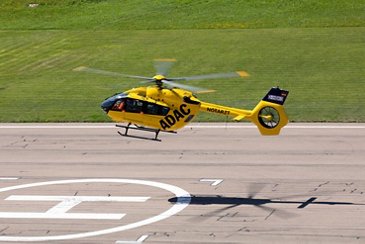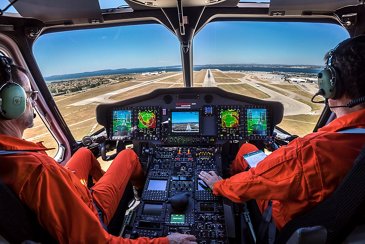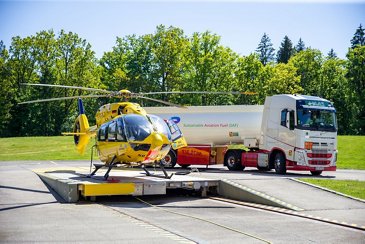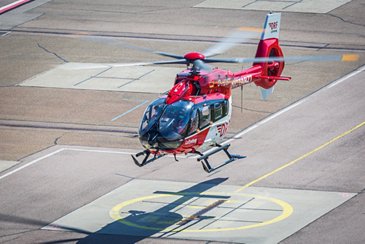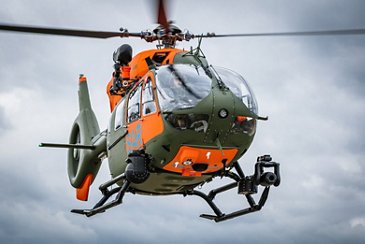The H145 surprised even its engineers with the qualities of its new main rotor. Below, the story behind the rotor’s development, and how it ended up on the H145.
At Heli-Expo 2019, some of the buzz has been focused around Airbus’ H145 and its brand-new rotor. Five bladed, bearingless, with a smaller hinge offset . . . the innovations packed into this single element are more than we usually see revealed on an aircraft.
First prototype
The H145’s rotor actually started life on Airbus’ Bluecopter technology demonstrator. This re-engineered H135 was unveiled in 2015 as the company’s test bed for new technology, kitted out with such innovations as a new Fenestron tail rotor, a T-tail, and a bearingless 5-bladed main rotor.
“The Bluecopter was a highly modified H135 with a larger rotor diameter than a normal H135. Its ride and comfort were so good that we had the idea to strap it onto an H145 and see what it would do,” says Carl Ockier, the H145’s flight test engineer.
Overwhelming results
“We started with lower aircraft weights and incrementally increased. And all of a sudden, we found out that this rotor seemed to be perfect for the H145,” says Alexander Neuhaus, the test pilot on the Bluecopter and H145. “We were surprised, because although the rotor was not designed for the H145’s weight and aircraft type, by just taking it off the H135 and putting it on the H145 the result was overwhelming. That ended with the decision to go on with testing.”
There was little more to be done. The programme ran calculations and did simulations to make sure the rotor could withstand the H145’s flight load. Small modifications followed and then the H145’s testing campaigns began to certify the new rotor.
We were surprised, because although the rotor was not designed for the H145’s weight and aircraft type, by just taking it off the H135 and putting it on the H145 the result was overwhelming.
- Alexander Neuhaus, the test pilot on the Bluecopter and H145

An unexpected advantage
As on an H135, the H145’s bearingless main rotor works thanks to a flex beam that allows the rotor to flex both in flapping and lead lag motion, and to be twisted so that the blade angle can be changed for collective and cyclic control. The advantage is no bearings, so no moving parts that require maintenance.
What’s different on the H145’s rotor is that, whereas on the H135 the part where that flexing is done is an integral part of the blade, on the H145 there is a physical separation between the two: the flex beam is bolted onto the blade. This brings benefits to customers for maintenance or damage; rather than replace the whole blade, technicians just need to replace the blade’s outer part.
Smooth and controlled
The H145 is also reported to have an excellent ride. This is due to its smaller hinge offset. Helicopters with articulated rotors have a defined hinge somewhere, where the blades “flap” to meet various roll or pitch states. The further out the hinge is from the centre of the hub, the more controllable the aircraft will be, but the more it will react – and feel bumpy – in gusty winds.
On the current H145 models, the hinge offset is around 12%. The new design was able to bring this to around 7%. What’s the advantage? The smaller offset is what gives the H145 a smooth ride while still retaining control in turbulence. During their ferry flight to the H145’s winter testing grounds in Finland in January 2019, Neuhaus and Ockier encountered about 30 minutes of intermittent gusts up to 65 knots. The H145’s handling qualities didn’t suffer in the least.
Related stories



